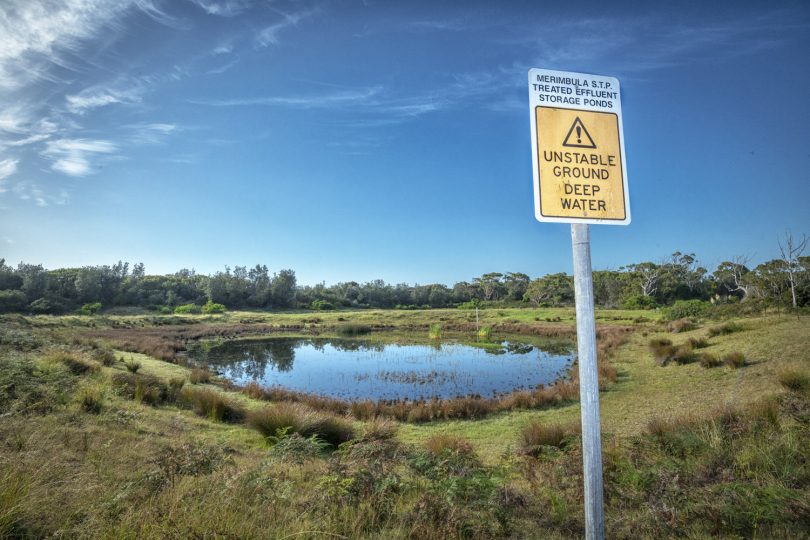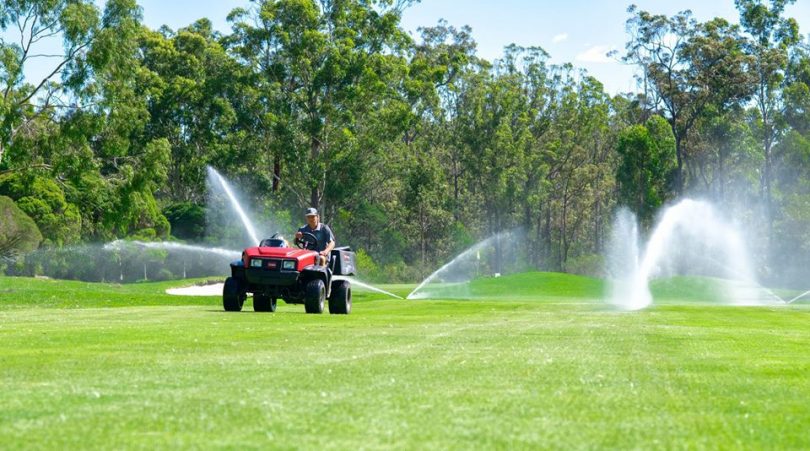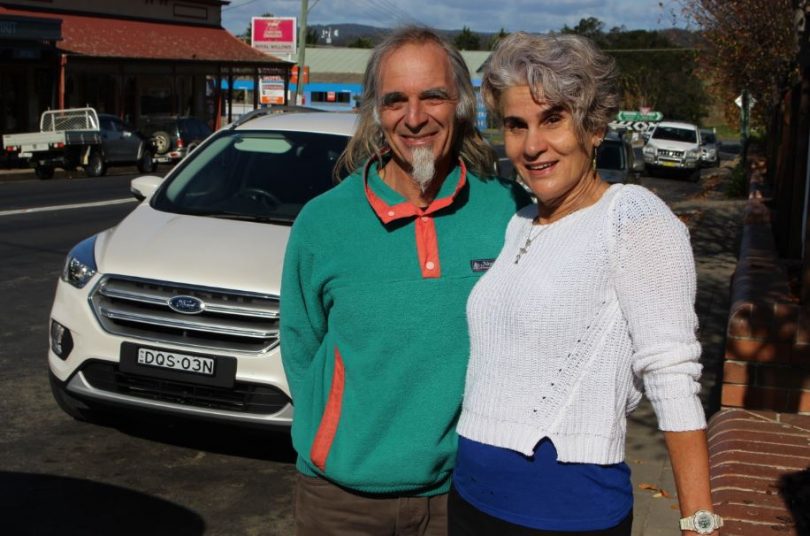
The current beach face outfall on Merimbula – Pambula Beach. Photo: Brent Occleshaw on behalf of BVSC
Last week’s meeting of Bega Valley Shire Council unanimously approved the location of a 2.6 km ocean outfall in Merimbula Bay. There was a sense of councillors not really having too much choice as plans for the Merimbula Sewage Treatment Plant (STP) upgrade advance.
A number of times during the discussion and in previous communication around the project, Council has suggested it is being “directed” by the Environment Protection Authority (EPA) to build the outfall through a condition on the STP’s operating license. But that is not as black and white as it sounds.
In response to questions from Region Media, a spokesperson for the EPA says, “the EPA has required the Bega Valley Shire Council to conduct studies into the shortcomings of the existing system and to develop options that integrate treatment, beneficial re-use and suitable disposal at times when beneficial re-use is not possible.”
“The EPA is supportive of the scientific work the Council has been undertaking and is pleased to see that this matter is progressing.
“It is the Council’s responsibility to determine the preferred mix of options. In looking to continue to progress the sewage system upgrade the EPA is reflecting Council’s decisions in the EPA licence.”
In simple terms, construction of an ocean outfall is now part of the STP’s operating license, but only because Council processes have decided that an outfall is the preferred option.

Dunal exfiltration ponds currently used by BVSC impact groundwater and Aboriginal heritage. Photo: Brent Occleshaw for BVSC.
For over a decade, the EPA, Council, and the community have not been happy with the current methods of disposal for excess treated effluent.
“The EPA has been concerned for some time about the beach-facing pipe on Merimbula Beach and its inability to appropriately protect the environment and community health,” the EPA says.
“In addition, the EPA has ongoing concerns regarding the current discharge of treated effluent to the dunal exfiltration ponds and its impact on groundwater quality – including the risks treated effluent poses to Merimbula Lake and Merimbula Bay, ecology of the dunes and significant Aboriginal sites.”
For the record around, 30% of the treated wastewater is currently directed to Pambula Merimbula Golf Club and Oaklands Farm at Pambula for irrigation.

Pambula Merimbula Golf Club has 1000 sprinklers all irrigating from the Merimbula STP. Photo: BVSC
Toby Browne, Council’s Project Manager says “The EPA is reinforcing the decisions of a democratic process and using its regulatory power to move council forward” keen to see the issue addressed.
Mr Browne acknowledges that the amount of time it’s taken to get to this point has created doubt and confusion in the mind of the community.
Following last week’s (October 30) decision at council, former Mayor Michael Britten issued a media statement. In early 2013 the then Cr Britten represented council on the focus group of staff, community representatives and experts in the field that recommended council proceed with an ocean outfall – all be it a longer pipe then has been adopted. Along with a number of reuse options.
“Council in the last two years have engaged with yet another focus group who have expressed a desire for reuse,” he says.
“Council has not attempted to realistically explore and cost other reuse options, which I believe with the changes in climate they are bound to do.”
Mr Britten suggests the process has been “arse about” and the consideration of reuse options should have come first.
Getting effluent off the beach and out of the dunal ponds is Council’s immediate priority.
“What we do now is not environmentally sound, this [the outfall] will reduce the impact on the environment,” Cr Cathy Griff says.
“This will lead to a higher level of treatment which will open up more reuse options. If we were to cancel what’s been done it could take another 10 years to rethink the whole thing and the pollution occurring now is unacceptable.”
Cr Jo Dodds is of the same view, adding, “I am entirely satisfied that at this stage there is no other option.”
“I feel I have cast fresh eyes over this and good decisions have been made at every step, but there comes a point in these big engineering projects where it’s hard to turn back.
“The EPA has drawn a line in the sand under our current practices and this is the best option for the money available.”
Councillors have directed staff to prepare a detailed report of reuse options that can piggyback on the upgraded Merimbula STP. Council has also made a commitment to expanding effluent reuse and will undertake further investigations with Pambula Merimbula Golf Club.
“We’ve never had a full report and we’ve been asking for a full report and costings for a couple of years,” Cr Robyn Bain said at last week’s meeting.

Marianne and Stephen Kambouridis from the Merimbula/Pambula Wastewater Alternatives group. Photo: Ian Campbell.
The Merimbula/Pambula Wastewater Alternatives group remain sceptical, spokesperson Marianne Kambouridis says, “The EPA considers that Bega Valley Shire Council needs to develop and implement a robust and reliable beneficial effluent reuse scheme at Merimbula.”
“Our council appear to be NOT interested in robust and reliable beneficial reuse.”
An Environmental Impact Statement is the next step at which point the EPA is required to provide advice to the NSW Department of Planning and Environment including “a comprehensive assessment of the options proposed by Council and determine whether they meet the appropriate environmental and statutory requirements,” the EPA says.
The current cost of the project is estimated to be $32 million, the majority of which will need to come from the NSW Government.







